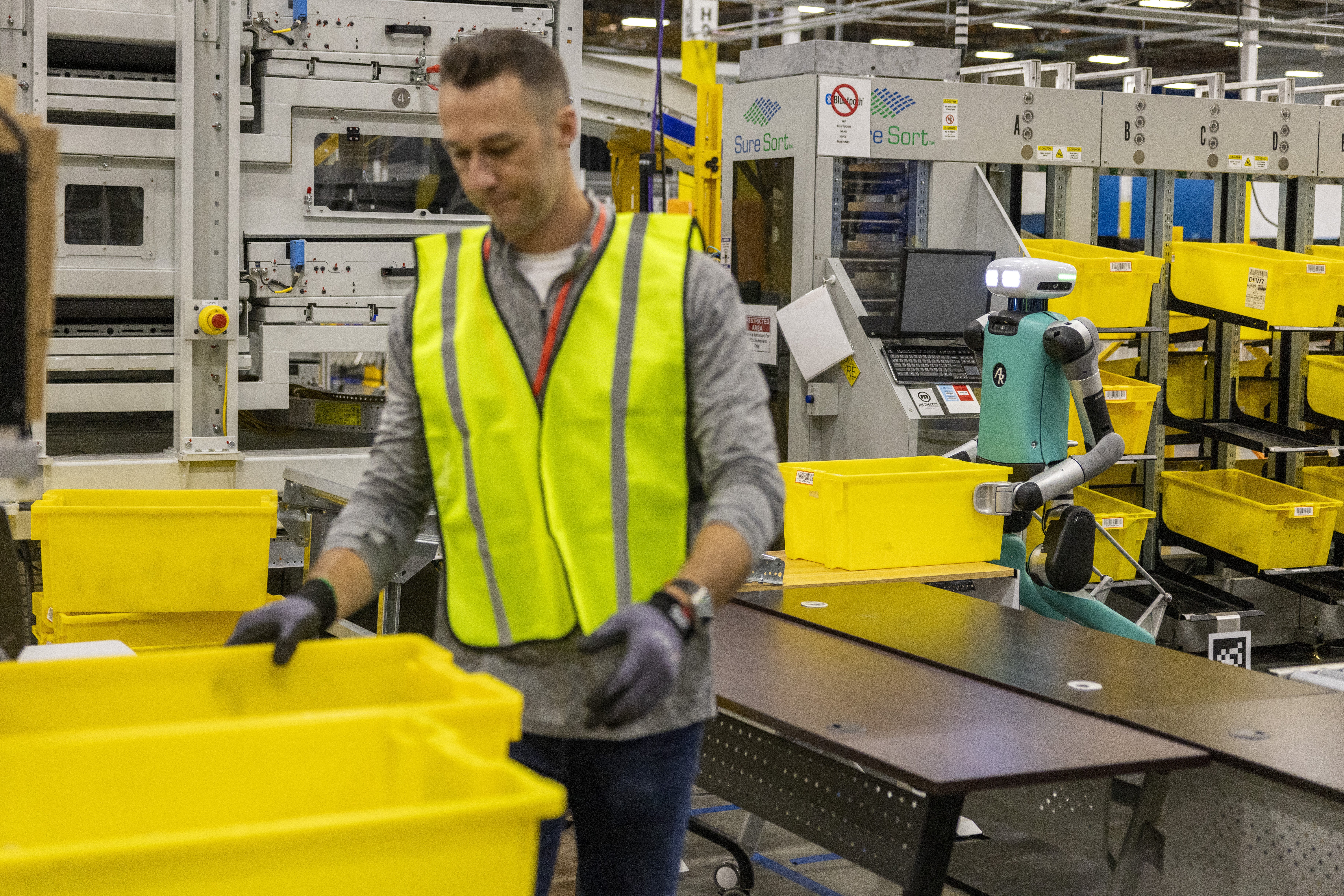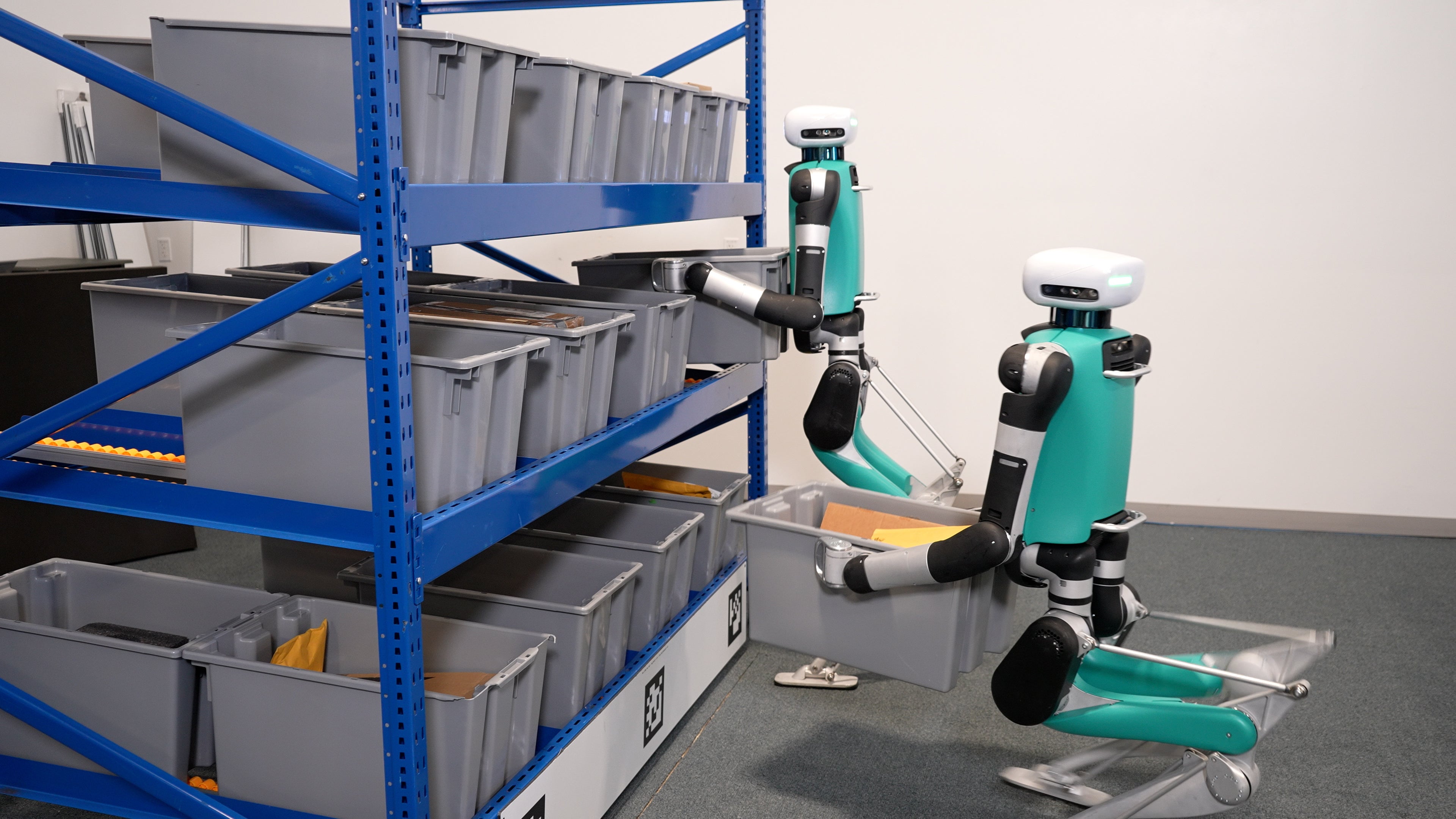Amazon trials humanoid robots to see if they can help staff warehouses
New ‘Digit’ machine could be perfect for places designed around humans, Amazon says – but commits that it will not steal jobs

Amazon is testing whether humanoid robots that walk around with glowing eyes could help staff its warehouses.
The company has in recent years added a host of new technologies as part of its Amazon Robotics arm, primarily using it in its warehouses, including arms and small carts that are able to help pack orders. It now has 750,000 robots working alongside employees, it said.
This week it unveiled more of hose robots, including a system named Sequoia that helps pack its itinerary at those warehouses. But the most dramatic new robot was a system named Digit that is now being tested for Amazon’s operations.
Amazon calls Digit a “mobile manipulator solution”, and pointed to the fact that they are able to move around and grasp items in ways that other robots aren’t. It does so in an uncannily human form, with glowing eyes in the front of its head and arms and legs that allow it to walk around.
The system was built by Agility Robotics, which has a partnership with Amazon. It is 175cm tall, can work for 16 hours out of a day and has the ability to perceive people and crouch and squat, for instance.

“Its size and shape are well suited for buildings that are designed for humans, and we believe that there is a big opportunity to scale a mobile manipulator solution, such as Digit, which can work collaboratively with employees,” Amazon said in an announcement. “Our initial use for this technology will be to help employees with tote recycling, a highly repetitive process of picking up and moving empty totes once inventory has been completely picked out of them.”
Tye Brady, chief technologist at Amazon Robotics, said that he was more interested in how the humanoid form could allow for new kinds of mobility, such as using legs to walk over varied terrain, rather than having it mimic the look of humans. He also suggested that if the robot’s shape came to be a barrier to adoption then Amazon “can change that”.
The robot is still in testing for now, in an attempt to understand how it might be used, and is not deployed in any of Amazon's normal operations. It may never actually be used, it suggested, if the project finds that such robots are not helpful.
Amazon also committed to ensure “robotics are collaborative and support employees”. In an apparent attempt to allay concerns about the robots taking jobs and leaving its staff redundant, it pointed to the growth in new jobs that has come even as its investment in robotics has increased, and said that there were 700 new job categories that didn’t exist before that expansion.
“From the hardware to the artificial intelligence embedded in our robotics, we are passionate about technology that makes the work experience of our employees safer, easier, and less repetitive,” Amazon committed. It said that the extra time saved with robots would allow employees to “take a step back” and evaluate how orders were being fulfilled, for instance.
Amazon is just one of a range of companies looking at humanoid robots for logistical work. Tesla, for instance, has a system called “Optimus” which Elon Musk has suggested could eventually become its biggest business, but which is yet to actually be rolled out.
Join our commenting forum
Join thought-provoking conversations, follow other Independent readers and see their replies
Comments
Bookmark popover
Removed from bookmarks